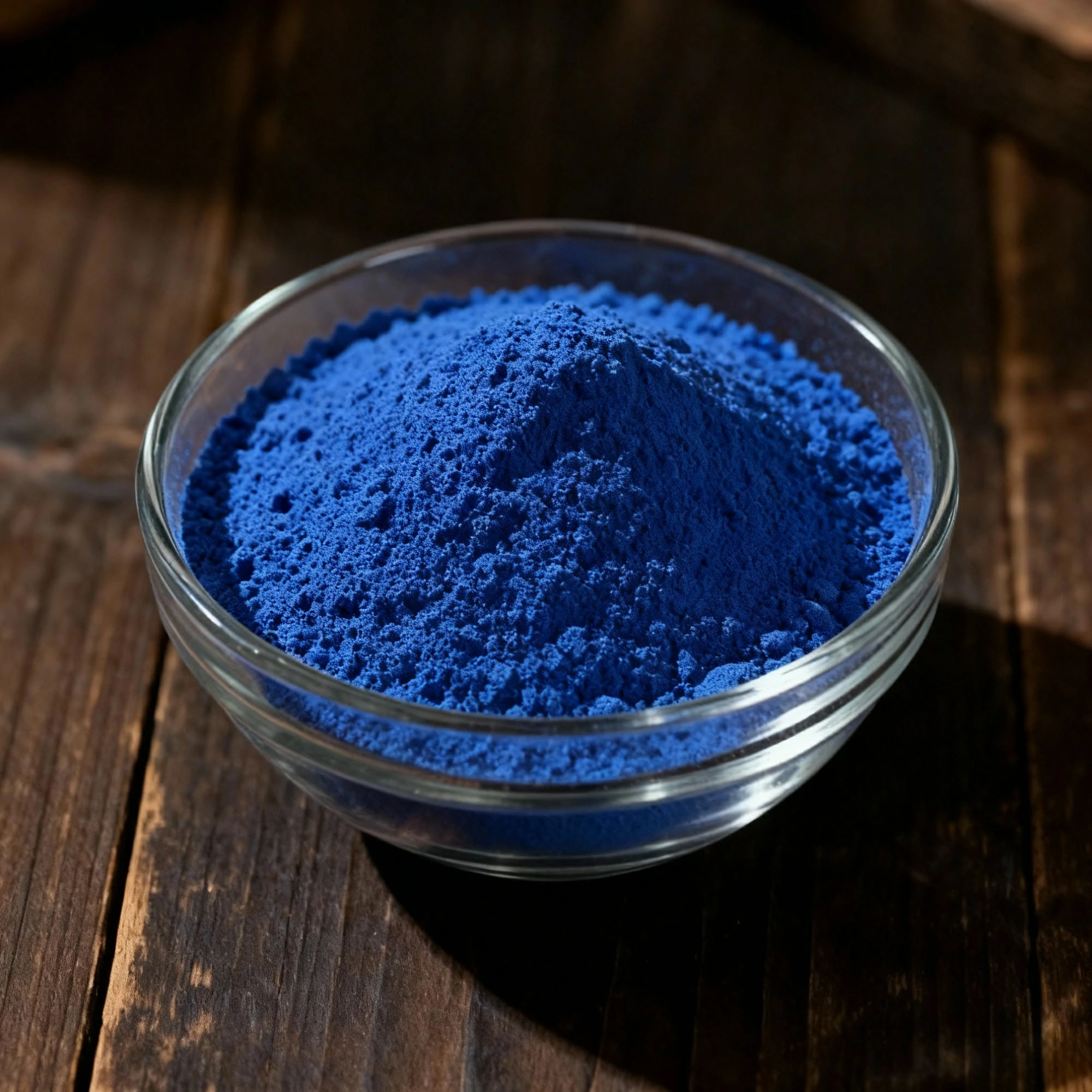

Copper Citrate
One unit of:Unknown
Product Info
What is Copper Citrate?
Copper Citrate is a highly bioavailable chelated mineral salt formed from copper and citric acid, primarily used as a nutritional supplement ingredient to fortify foods and supply the essential trace element copper.
How is Copper Citrate made?
| Step No. | Production Stage | Key Action | Control Point & Note |
|---|---|---|---|
| 1 | Reaction Setup | Charge a glass-lined or stainless steel reactor with purified water and a stoichiometric amount of Citric Acid. | Control Point: Accuracy of raw material weights is crucial for reaction efficiency and yield. Note: Use deionized/purified water to avoid introducing mineral impurities. |
| 2 | Synthesis | Slowly add Copper Carbonate powder to the citric acid solution under constant agitation, allowing for the release of CO2. | Control Point: The rate of addition must be carefully controlled to manage foaming/effervescence and prevent reactor overflow. Note: The reaction is complete when CO2 evolution ceases and the pH stabilizes. |
| 3 | Precipitate Separation | Filter the resulting slurry to separate the solid, light blue Copper Citrate precipitate from the mother liquor. | Control Point: Ensure the filter medium is effective for capturing fine particles. Note: The filtrate should be clear, indicating complete precipitation and minimal product loss. |
| 4 | Purification | Wash the collected filter cake with purified water multiple times. | Control Point: Washing is critical to remove any unreacted starting materials and soluble by-products. Test the conductivity of the final wash water to confirm purity. |
| 5 | Drying | Dry the washed Copper Citrate in a suitable dryer (e.g., vacuum oven, tray dryer) at a controlled temperature. | Control Point: The drying temperature is critical (e.g., typically below 100°C) to prevent decomposition and remove water to meet the specified moisture content. |
| 6 | Milling & Sieving | Mill the dried product to break up lumps and then sieve it to achieve a uniform particle size. | Control Point: The sieve mesh size determines the final particle size distribution, which is a key physical specification for many applications. |
| 7 | Quality Control & Packaging | Sample the final powder for comprehensive QC analysis. Upon approval, package the product in sealed, labeled containers. | Control Point: Final analysis must confirm purity (assay), heavy metal limits, and physical properties against specification. Note: Use moisture-proof packaging to ensure product stability. |
Technical Specifications
| CAS Number | 10402-15-0 |
| Chemical Formula | C₆H₈CuO₇ (often as Cu₂C₆H₄O₇·xH₂O) |
| Solubility | slightly soluble in water; soluble in dilute acids and ammonia |
| Storage Conditions | store in cool, dry, ventilated area protected from light |
| Shelf Life | 24 Months |
Applications & Usage
Common Applications:
Mechanism of action:
| Parameter | Copper Citrate |
|---|---|
| Functional Category | Nutrient Supplement; Antimicrobial Agent; Enzyme Cofactor |
| Key Ingredients | Copper (II) Citrate |
| Mechanism of Action | Provides bioavailable copper (Cu2+), an essential trace mineral that serves as a cofactor for metalloenzymes (e.g., cytochrome c oxidase, lysyl oxidase) vital for cellular respiration and connective tissue formation. As an antimicrobial, copper ions disrupt microbial cell membranes, denature essential proteins, and generate reactive oxygen species (ROS), leading to oxidative stress and cell death. |
| Application Effect in Product | Nutrient fortification of supplements, infant formula, or specialized foods to prevent copper deficiency. Acts as a preservative to inhibit microbial spoilage and extend shelf life in specific applications. Can help stabilize color by inhibiting certain enzymatic browning reactions. |
Comparison:
| Product Name | Category/Type | Key Features | Strengths (vs peers) | Weaknesses (vs peers) | Best Use Cases | Why Choose |
|---|---|---|---|---|---|---|
| Copper Citrate | Chelated Copper Supplement | Copper bound to citric acid; good water solubility. | Well-absorbed and offers a good balance of bioavailability and cost. | Bioavailability may be slightly lower than glycinate or picolinate; less common than gluconate. | General daily copper supplementation; inclusion in multi-mineral formulas. | For a cost-effective, well-tolerated chelated form that provides solid bioavailability. |
| Copper Gluconate | Chelated Copper Supplement | Copper bound to gluconic acid; most common form in supplements. | Widely available, most affordable chelated form, and extensively studied. | Good, but generally considered less bioavailable than glycinate or picolinate. | Budget-conscious daily supplementation where high availability is not the top priority. | The most accessible and economical choice for a standard chelated copper supplement. |
| Copper Bisglycinate | Chelated Copper Supplement | Copper bound to two glycine amino acid molecules. | Superior bioavailability and very gentle on the digestive system; stable chelate. | Typically more expensive than citrate and gluconate forms. | Individuals with sensitive stomachs or compromised mineral absorption. | When maximum absorption and minimal gastrointestinal upset are the primary goals. |
| Copper Picolinate | Chelated Copper Supplement | Copper bound to picolinic acid, a natural chelator. | Extremely high bioavailability, potentially using a different absorption pathway. | Often the most expensive option; less common than other forms. | Addressing a diagnosed deficiency under medical supervision; when other forms are ineffective. | For therapeutic use requiring the highest possible rate of copper absorption. |
| Copper Sulfate | Inorganic Copper Salt | Copper bound to a sulfate ion; an inorganic mineral salt. | Extremely inexpensive raw material. | Low bioavailability compared to all chelated forms; higher potential for GI distress. | Primarily used in agriculture and animal feed; not recommended for human supplementation. | Almost never the right choice for a human dietary supplement due to poor absorption and side effects. |
Technical Documents
Available Documentation
COA and SDS available
Safety Data Sheet (SDS)
MSDS available
Certificate of Analysis (COA)
Quality assurance documentation
Technical Data Sheet
Detailed technical specifications